Plywood Lasts Amazingly
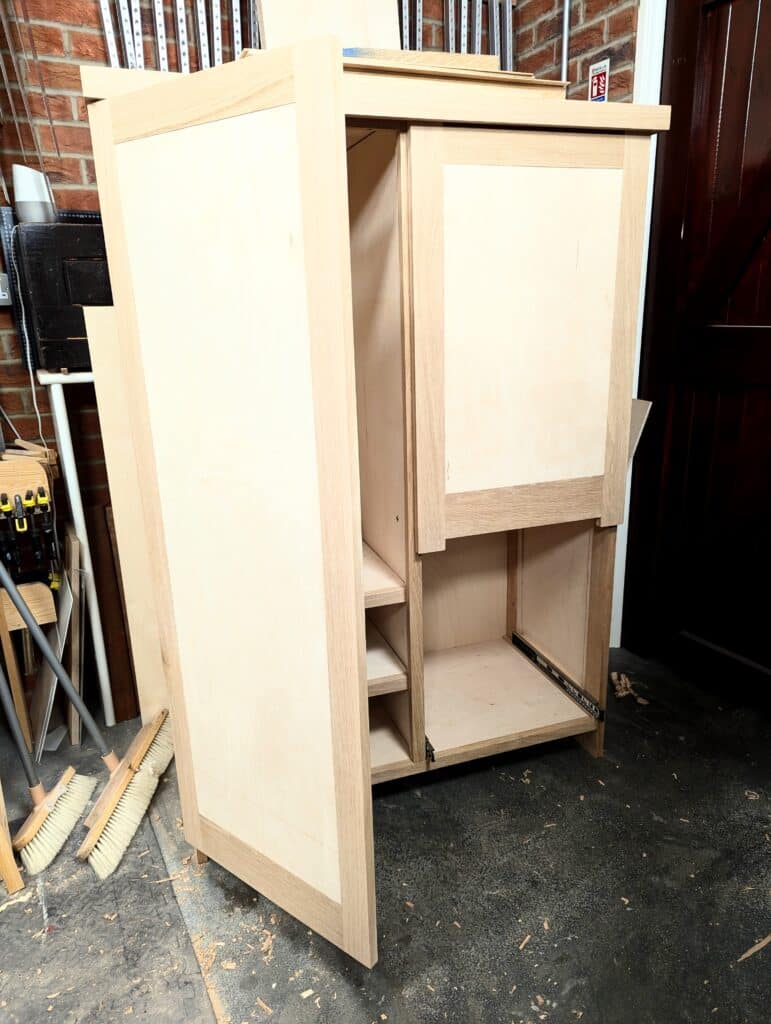
My new project is coming together well. I’m altogether convinced of its many merits and thrilled to be near completion. Already a couple of friends have said, “I want one!” Followed by, “It’s perfect for….. and for……”
The door swung freely to and fro the first time I tried it. Three brass hinges synchronised the movement and a slight friction squeek from one hinge told me the pins were tight but not too tight. Setting recessed hinges ensures nothing will shift long term but the work requires exactness. I got it first time and a sharp chisel took good care of each hinge setting. One of my handmade router planes, a smaller version set the depth for the guaranted flatness and neatness I wanted, took over from the chisel work and sped up the process because I can use all of my own power and directness. I’ve used twelve plywood panels made from birch. The final wardobe is one of the most solid and dependable I have ever made. In some ways it’s been an experiment. In others there is nothing experimental about it at all. The difference in this piece is the hybridising of materials and traditions to create a complete flat-pack product with a built-in longevity to outlast generations of users even if they dismantle and trans[port it dozens and dozens of times in several lifetimes. I’m happy!
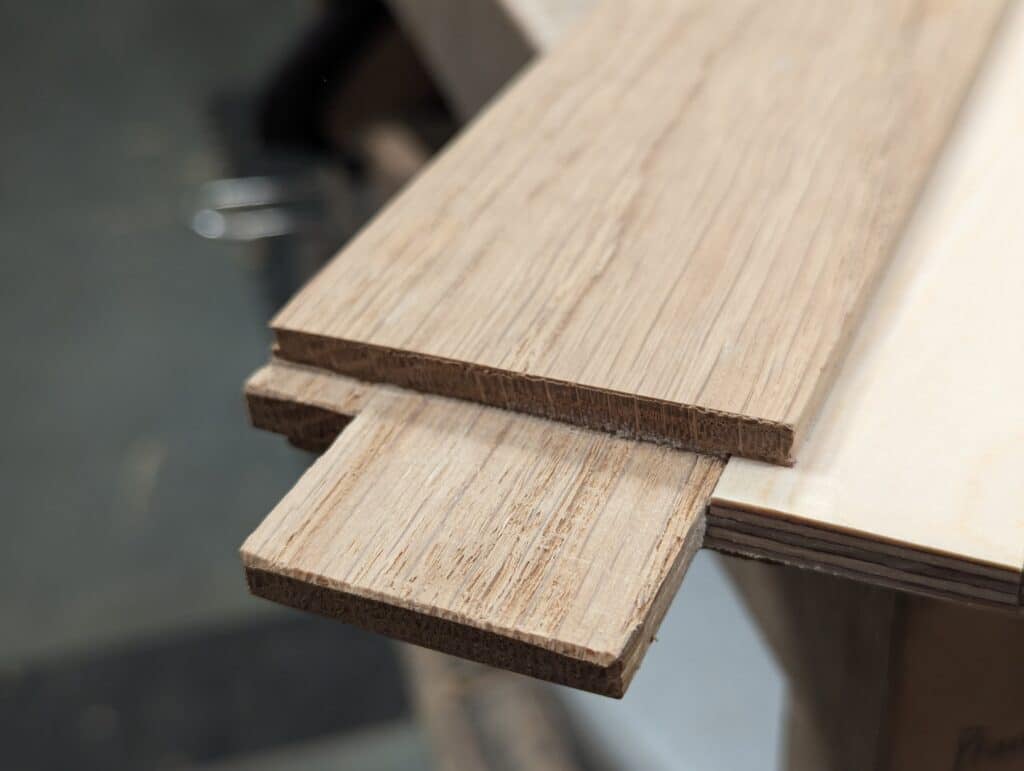
Can plywood last as long as solid wood? It can and it can’t. The main consideration about plywood as with any other engineered board revolves around material particle breakdown. Though wood can and often is the prime material used in manufactured boards or sheet goods, the integrity of many materials often becomes compromised over long-term exposure to day to day moistures in the atmosphere causing the material to expand and contract even when in most cases that might only be minimally and much less than in wood. This then results in a breakdown in the integrated composite fibres that generally rely on different types of resins and adhesives for cohesion. For better furniture making, plywood has been highly regarded for its long-term reliability but in recent years high demand and mass manufacturing competition and the resultant cost-cutting has led to look-good products masked by an outer veneer. It’s best to get to know your supplier knowing their sheets come from a quality maker. They’re out there.
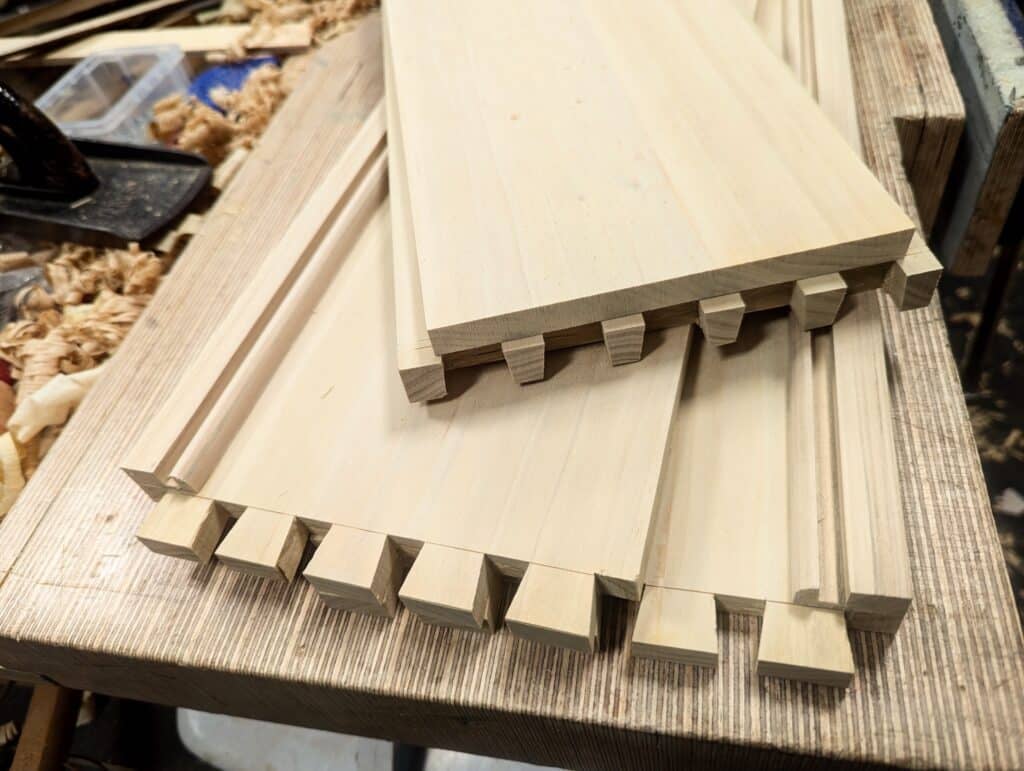
I do understand the reluctance people have to trust their work to an engineered panel usually held together with glue but the glues are better and more resilient than they have ever been. Plywood is made up of multiple veneers where each of the the thin layers is laid so that the grain direction of each layer is placed at 90º to the adjacent layers. This building up of layers creates a strong and durable sheet composed primarily of solid wood. The adhesive used on high grade plywood and the veneers used or of the highest quality but on low-grade plywoods the outer layers of veneer exposed to the outside front and back often separate. This separation exposes the inner layers to the issue of moisture absorption leading to further breakdown and disintegration in the long term.
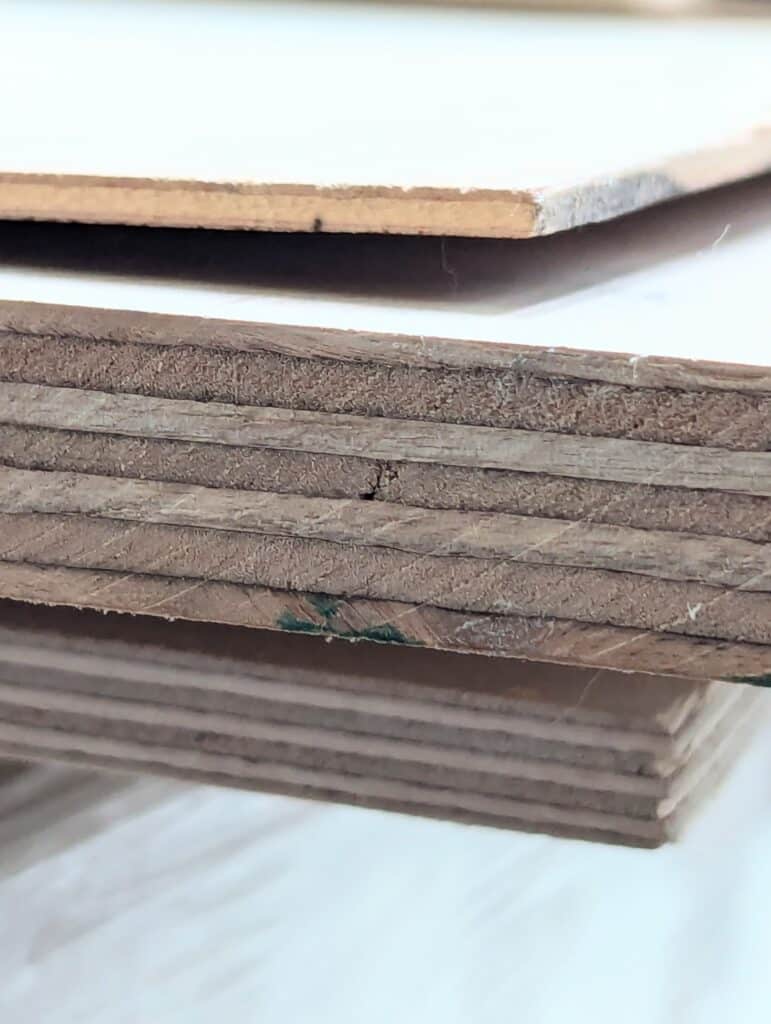
For both indoor use, plywood resolves many issues including shrinkage or expanion, strength needs and expansive wide and long panelling. Buying good or top quality plywood is always key to longevity. Choosing a maker with a good reputation is not always easy as often we have no knowledge of the maker. Knowing your supplier can be the same way but due diligence in your enquiries will help. The plywood I choose is what we term water and boil proof ––WBP. Plywood is now a traditional material. Lower grade plywoods can have overlaying in the core layers which affects the evenness of thickness and also puts pressure on the adjacent layers along with the outer finished and sanded surfaces. The lower grades commonly have voids between the layers which causes problems in one way or another down the line and is unacceptable. The birch plywood I mostly use has none of this and all the layers including the ever-important outer layers are of near equal thickness. This means that I can, if necessary, plane or scrape even these outer surfaces. Decorative faces veneered with an ultra-thin skin rarely have this depth of thickness and might well be little more than the thickness of a sheet of paper.
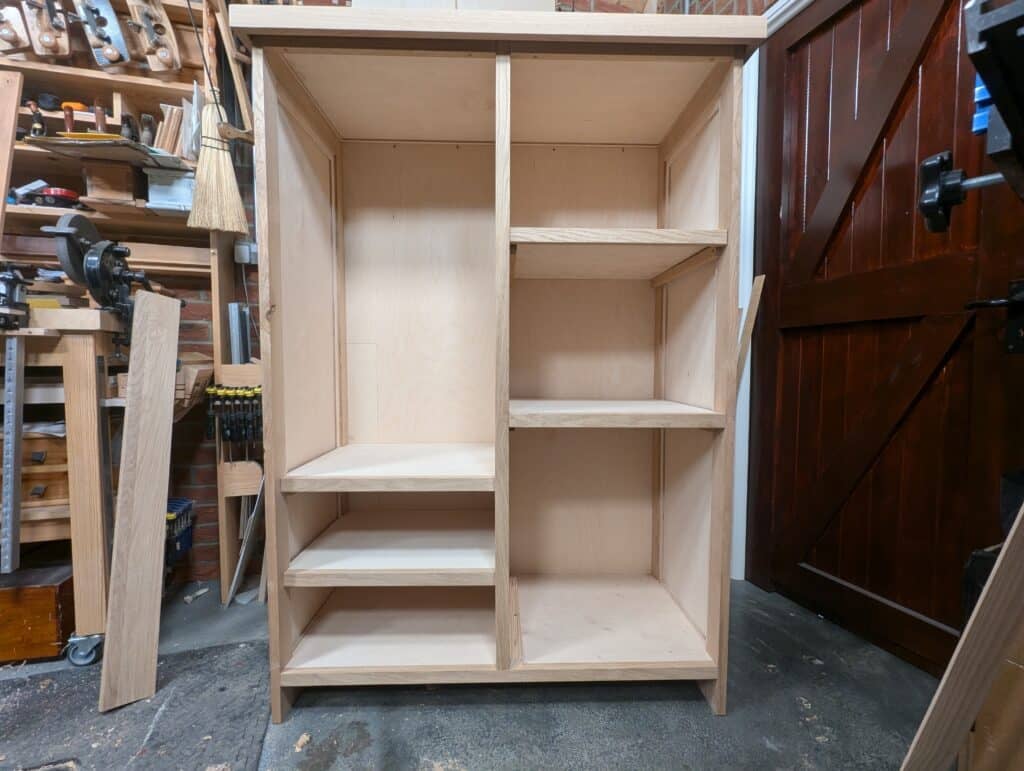
My enjoyment in my work comes from trying and trialing new things, experimenting and discovering what can and cannot be done. We tend to think that sheet materials don’t expand and contract but they do. Stability of wood varies according to the wood species and this results in what we call wood movement. Plunge a dried down section of 6″ wide and half-inch long maple into a bucket of water and leave it for 24 hours and the maple will have expanded by over a centimetre: a good half inch. Wood movement can mean many things to us but mostly its the expansion and contraction that impacts our work. My tight tolerances in some of the cabinets in Sellers’ Home pieces meant I had to go back in and ‘fix’ problems like doors and drawers sticking or catching. I mostly ecected this and especially with maple or sycamore because these two culprits need extra space to expand into. This si the reason we should not decrease moisture levels to a fanatically low level. 11-15% is usually good for most homes but I am cautious in this because it also depneds on where you live, how many kids take shopwers and whether you create steam in your cooking. These can be measured with a basic low-cost hygrometers magnetised to different parts of your home. A hygrometer is not the same as a moisture meter which measures the amount of moisture already existing in materials like wood, bricks, plaster and so on. My experiments of some 25 years ago on the expansion of wood through immersion and allowing the same to reacclimate in the atmosphere it would eventually spend the rest of its dried life gave me experiential knowledge I could rely on in my making furniture for the rest of my life. Rather than just reading what some author wrote as his or her thesis but that bore no resemblance to much of any kind of reality I discovered knowledge that would be mine forever.
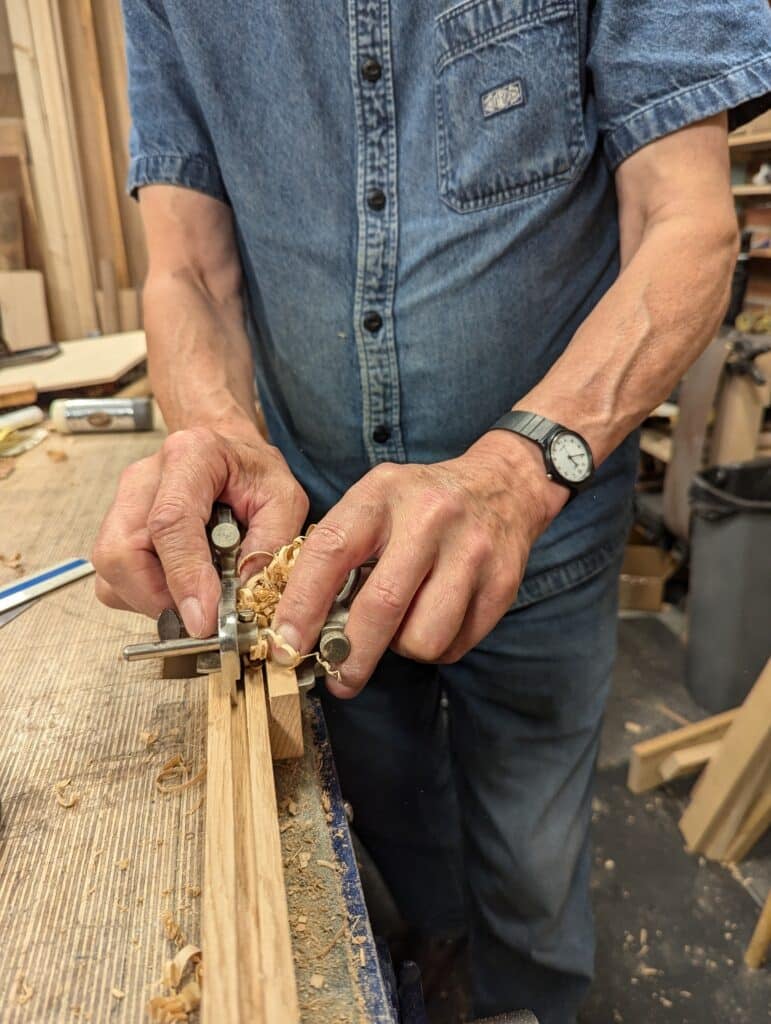
Many things I do may never have been done in this or that particular situation, they can be absolutly never done before I do it, but they can be adapted to give me something completely brand new. In this plan for a different panel board lipped or framed with solid oak and conventional and unconventional methods for creating doors and framed panels or edge lipping with true substance came not to compete with machine makers but to equip hand tool makers. Of course, I am not selfish. If machinists want to use the methods `i used they can go ahead. i wanted to be advantaged by the sheer span and stability plywood gave me but still rely on my highly trusted and efficient hand tools. I also wanted the pure exercise and mental reliance on making by hand that cannot be had by the alternative methods of machining. using my system gave me the pure delight of adaptation and adoption of a material that could be worked and managed by hand methods along with mortise and tenon joinery, dovetails, etc.
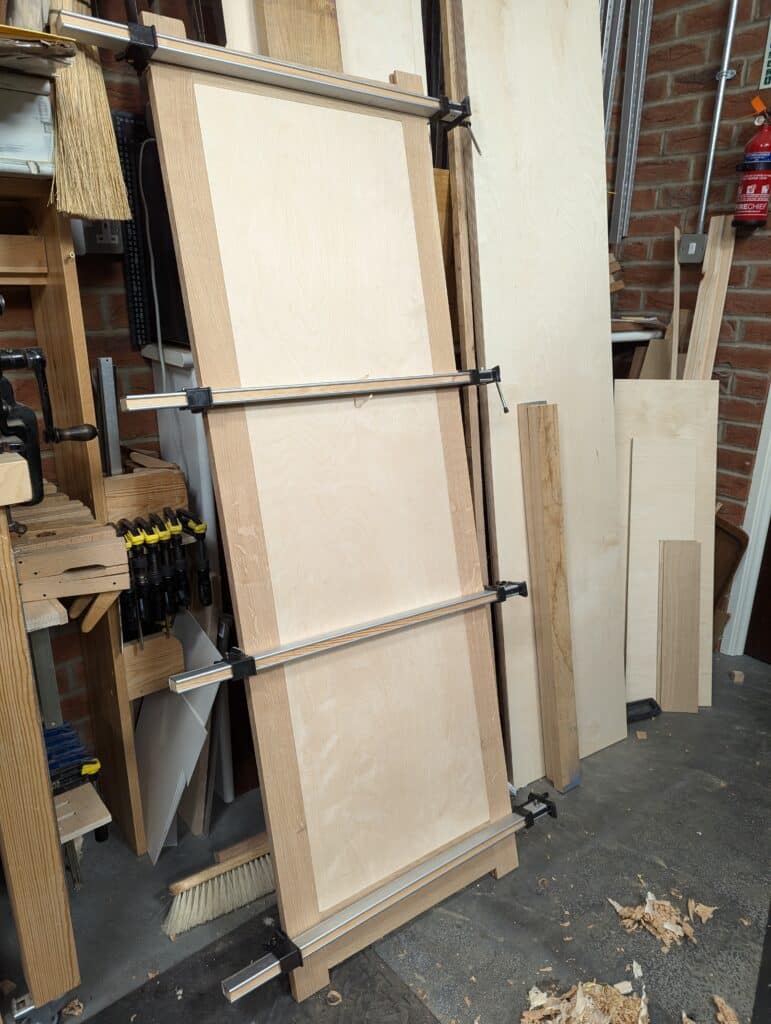
How confident am I that the glued surfaces working as laminations will last? Well, I am 75 years old in three months. I have used this birch plywood since I was 15 years old and it has never failed me. But `i have also dismantled pieces with plywood in them that are much older than that, perhaps a hundred years old, and this plywood was not WBP. Think about a Stradivarius violin or cello. There are about 20-30 pieces in such an instrument. Did you know that that there is but one joint connecting the neck to the body and all of the other pieces are simply glued and clamped in place until the glue dries? He was actively making unti, his death in 1737. All he used as an adhesive was animal hide glue. 300 years since he glued up his pieces and they are still together.
Footnote: The quality outcome of plywood still depends on precision somewhere be that CNC, machine or human. The birch plywood was a good grade but misaligning a splice designed to have one later compensate for an adjacent one by using oppostional angles only work if the veneers are aligned near perfectly with one another. This one layer was off by a few millimetres but the swollen are telegraphed through to the two outer faces.
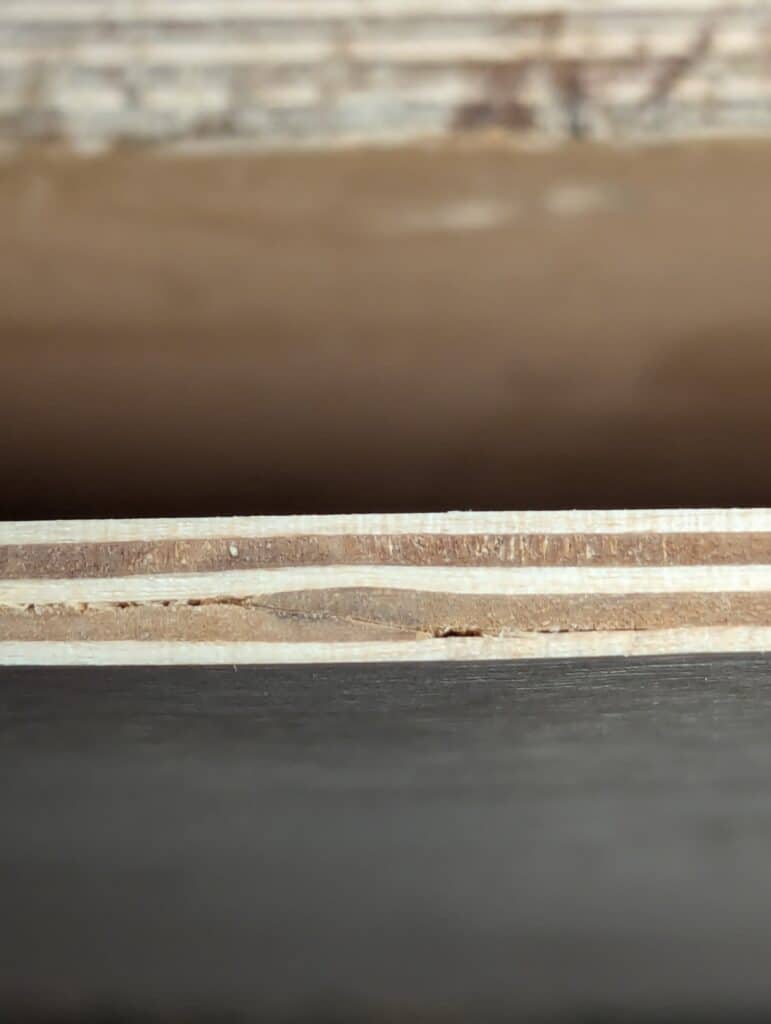
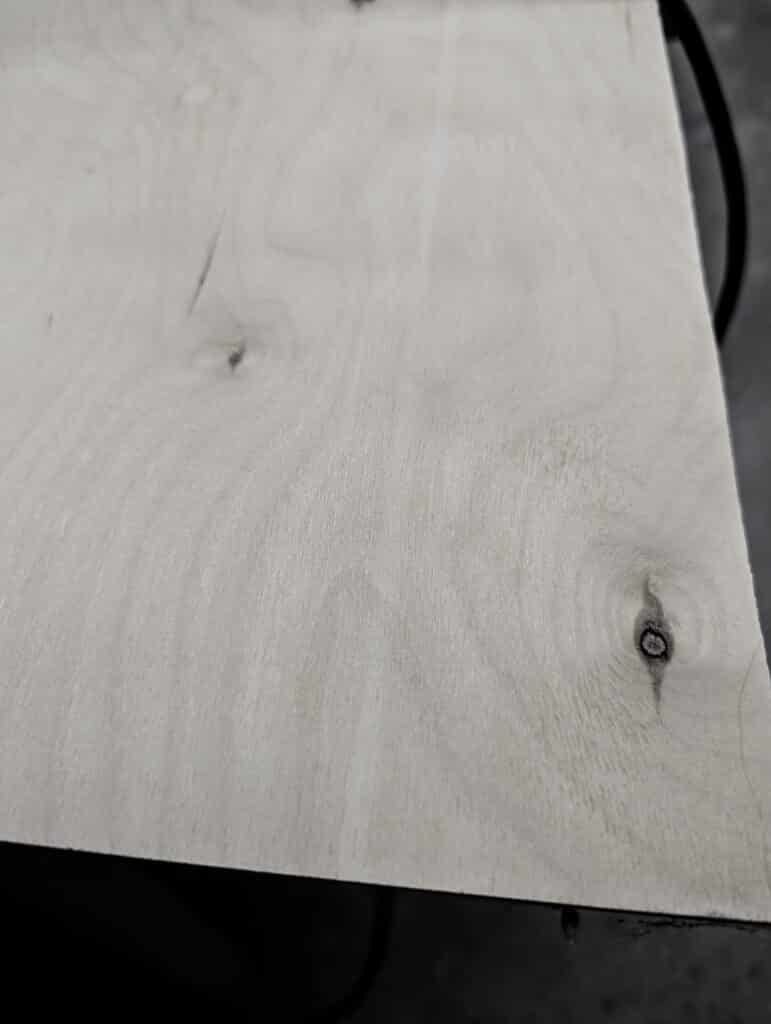


Since the “invention” of fire humankind has solved all its problems by using more energy. Plywood is one of those solutions. If you want it cheaper use less ply, more chips and energy, or even just sawdust and energy. Plywood as an engineered material almost begs for the use of power tools. Hand tools work. So, use more energy.
To use less of that one can reduce the plywood use to simple panels, as you did Paul. Panels encased in solid wood frames. The solid wood is jointed to solid wood. If one joints only ply to ply the product is hard to repair. If for whatever reason something breaks, it’s done in most cases. With the use of a solid wood frame, it would just be a matter of replacing a panel if it broke. That requires joints that can be opened in the solid wood.
So a lot boils down to energy and the cost of it. Energy is cheap. Very cheap. Imagine we would scratch all taxes except the energy tax. Let’s increase that to a level that the tax sum is the same as before so the whole country can run on it. What would happen? IKEA prices will suddenly sky rocket. Your pieces would suddenly become affordable as you use a lot less energy. You can manually chop a tree and make a chair out of it. The process keeps you warm, it “gives” energy (without tax).
I really like the way this project is done, using the strengths of both “woods” to make something durable, something that can last a few generations.
flac,
Energy is taxed though, it’s just not a visible tax, and one that falls on the heads of future generations. We live in a world that is/was created by a one-off fossil fuel windfall, which won’t be repeated for another 100 million years. An economy designed around the immature obssession of growth has to adopt the IKEA model as its primary means of production – there is no other way for it to work. IKEA will be able to produce a beautiful certificate of sustainability too, of course, ignoring that its products only last a decade (not always, I have an IKEA child’s table that would last much longer if it wasn’t designed around a fashion). The chickens will be coming home to roost soon though, as the world’s oil supplies continue to dwindle. This temporary period of excess will give way to the normal, which is furniture built simply and designed to last as long as it takes to replenish the resource used to make it. That’s the natural law, if you like, and one that will always prevail. Energy “taxation” is the normal, and is priced by resource scarcity. Paul’s furniture, in future, will be priceless.
Your right Rico. Future generations will pay. Sadly humans are opportunistic nest polluters.
Synthetic fuels have been made since around 1935, so “the world’s oil supplies” are in no danger.
Rebecca,
Yes, you’re correct. If we ignore the land use of synthetic biomass fuels, and the relative inefficiency of synthetic natural gas and hydrogen produced by renewables or nuclear, then we’ve got more than enough fuel to replace the rich energy density of fossil fuels.
Rico
My nephew is very good to us. House watches, has helped with some renovations, etc. About 4 or 5 years ago, he wanted a large sub-woofer speaker box for the back of his Chevy Suburban. When I mean large, it was to be 4 feet long x 2 feet wide by 18″ high (he purchased a plan online). I offered to make it for him. After discussing material options, we settled on Baltic Birch. All the corners were constructed with proud handcut dovetails. I finished it many coats of garnet shellac. It came out very nice. I enjoyed working with the plywood on this project and it felt like the perfect solution for that situation. Subwoofer speaker boxes of that size cost around $3 or $4K USD when covered with carpet (and no fancy joinery). I suspect for the right individual, there is a market opportunity to custom make these subwoofer boxes once you connect with the target audience. I can think of much worse things to do than to cut dovetails all day and make a living at it.
While I really don’t like MDF, IMO it is better for loudspeakers because, contrary to plywood, there is no risk to enter into resonnance with any music frequency.
For this usage, the MDF density and dampening properties are an advantage.
Good to know. Thanks for mentioning it. I didn’t dig much past tonal woods. Any idea on how well MDF behaves on large pieces for dovetailing, etc? My only real experience with MDF is on a quarter sheet of cherry skinned “plywood.” It has an MDF core and I didn’t know that when I ordered the sheet. I’ve mostly used it for door panels and drawer bottoms. Seems to work fine by hand tools but I’m not doing too much to it.
Right!
That door to the right of the photo of the cabinet is beautiful.
In my early years I glued solid Pine or Poplar to build kitchen cabinet bodies in my production shop. I was convinced that plywood was simply inferior to solid wood. Then I discovered “Baltic Birch” plywood which comes in 60′ x 60″ sheets. The 3/4″ thickness (actually 18 mm) has 13 plys, with both surface layers being about 1 mm thick, and it has no voids in the inner layers. I often leave the edges unveneered. The stability of this material is almost uncanny. Now I use it almost exclusively for cabinet structure on all utilitarian cabinetry (like kitchen cabinets). I use the 5 mm (5 ply, also in 5′ x 5′ sheets.) for cabinet backs and drawer bottoms. I started using it in 1983 and have not seen a failure yet.
Sorry I hit the wrong key and didn’t notice until I’d already posted. The 5 mm ply I spoke of is actually 6mm plywood.
Five foot square sheets is mainly an American USA thing. Ours are the standard UK size pf 8 foot by 4 foot. I sometimes think that that is what size fits wholly inside a UK sized white van because of the rain we get.
Those five foot squares are more common. You can get 4×8 sheets if you ask a Woodcraft or local lumber yard to order it. When my nephew purchased two 4×8 sheets of Baltic Birch in 2021 for the above mentioned project, he went to my favorite local lumber yard that has decent prices on hardwood. He paid $250 per 4×8 sheet. I felt bad given how much it cost. We needed one and a half sheets. Had I know, I think we might have looked for other building materials. It’s probably come down from that.
When working in Baltimore, I only had a pickup truck with an aluminum cover to transport materials and finished pieces. I made a frame out of 2 x10 construction lumber that fit between the wheel wells to support the 5′ x 5′ Baltic Birch. I dropped it off at my supplier’s yard and they’d stack the 5 x 5 sheets on it, then load it with a forklift. Easy Peasy.
I found out the hard way that there are retail outlets that sell Baltic Birch of lesser quality than the original. I talked to a large dealer of sheet goods and found that even they could be fooled. I was told there were a lot of copycats from Asia who were passing off what looked like Baltic Birch but the outer veneer was thin and there were voids. All I am saying is do your due diligence because the imitation plywood closely resembles the better quality. One way to tell is to look at the outer ply for thickness , another is to examine the good face for any bulges or places where the outer ply is separating . If you see any voids or the sheets are warped it’s an indicator that you are buying imitation products.
You make me feel relaxed, unpressured, and confident about the things I do in my shop. Thank you for your style and the skills you share.
Good quality plywood has become hard to get these days, at least here in Norway. There are a few companies that have amazing products in stock, but they refuse to sell to individuals for some reason. Perhaps it is too much work since we won’t buy a pallet worth at once..
And in the large chains of building material stores, you are lucky if you find C/C grade sheet goods (they mark it as B/B, but I think that is a big stretch) – stuff I would hesitate to use as anything but hardwood floor protection during renovation. If even that!
There are one or two companies that are willing to sell to individuals, but the cost of the material plus shipping makes it impossible to defend the cost – I might as well just buy high-end furniture.
The same thing goes for wood dealers. Seeing the images Paul have taken at his wood dealer makes me drool! What I would have done to get access to such a place nearby!
Thankfully, a few years ago I got the opportunity to harvest some oak I cut to planks, and there are small, local saw mills that I can get hold of planks from – oak, ash, aspen, spruce/fir, birch, and the odd cherry.
But plywood? That’s not really a possibility for me.
Try buying pecans growing naturally in Texas when you live there. They cost twice as much there as they do in supermarkets here in the UK. We may all see the writing on the wall one day, Vidar. I saw the decline in the USA over my 23 years there. The smaller suppliers eventually lost trade to the bix box stores that dictate to you what you will buy through what they choose to or will consent to sell you. IKEA and the like buys a whole Norwegian forest and suddenly you cannot buy the wood in plywood unless you pay twice the price for the wood that you pay for a fully made item like a dining table and four chairs that they sell. It’s called competition and living the dream. If only 20 guys working wood could set themselves up as a cooperative and buy in bulk without falling out over who gets to park their car where.
I think you are dead on here, Paul. We even see it in Norwegian grocery stores – all focus is on price, not quality. In fact, one of the biggest chains, Coop Xtra, are rather frank about it: «we do EVERYTHING we can so that you may do your shopping xtra cheap». And they do, as more and more of their products are inhouse brands (produced to fit a pricetag from the larger manufacturers). The price stays the same, mark up the brand names, the quality is a lot poorer than brand names… and we are fooled over and over again, munchin’ on sub par quality ham on our sandwiches. Why the manufacturers agree to do this is beyond me. In the long run, they’ll shoot themselves innthe foot!
On the bright side, we see that farmers are setting up «Vipps stores» (Vipps is a norwegian payment method where you use an app to send money). I buy fresh eggs and produce directly from the local farmers, at decent prices. But the quality? Through the roof! Especially the things we grow ourselves in out garden (another thing that has become very popular recently).
So anyway: I’ll just have to get by using real wood for my drawer bottoms and my door panels unless I come across some decent ply I can reclaim.
Maybe that’s not such a bad deal after all.
Here in Hawaii termites love plywood. Much more than solid wood. If I use it for anything I keep scraps around like bait to keep them out of my solid wood.
Paul can you name where you get your decent quality ply from in the UK?
thanks
There are many suppliers. You will need to do the research I’m afraid. It would be unfair on other suppliers if I single out or mention one that I have found or prefer over others so I tend to disallow promotions on the basis of fairness to all unless there is only one source and I think that it is necessary.
Inspiring post as always, thank you Paul
But for some reason I can’t see this post on the blog page, only found it after the weekly mailing..
Try to refresh the page. I often have to do this in order to see the latest comments, too.
I often have to do the same as well. I also find that the videos often fail to appear, even after a refresh, but find them youtube.